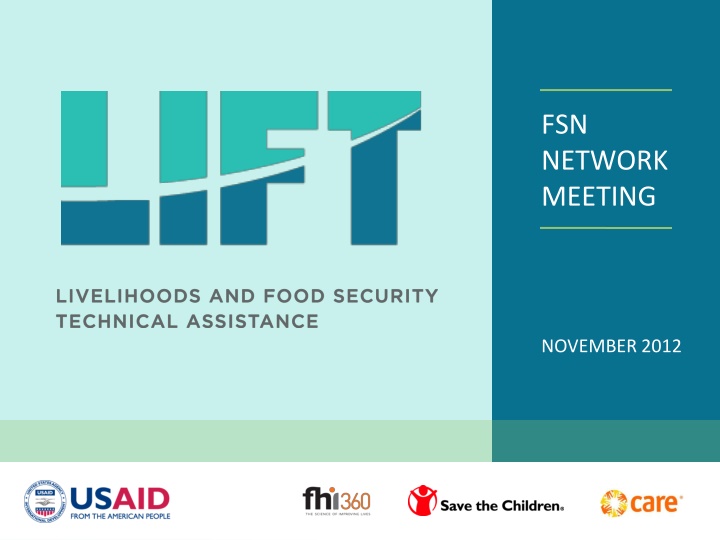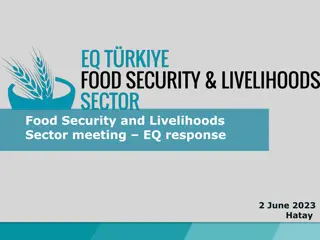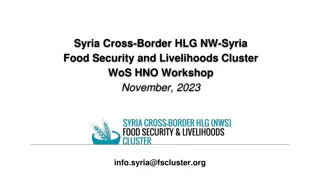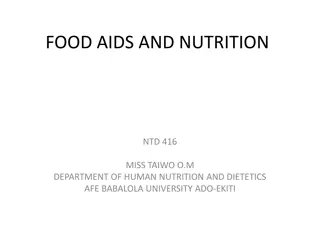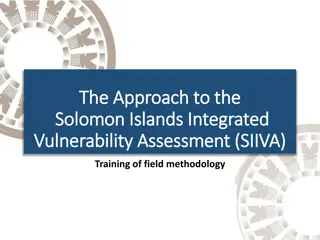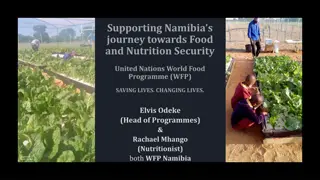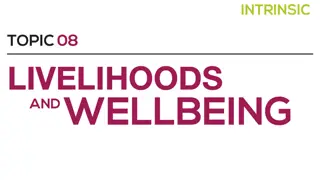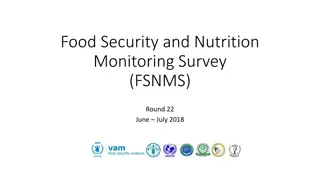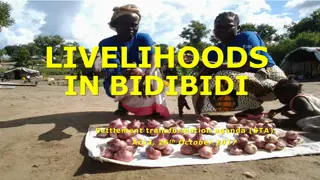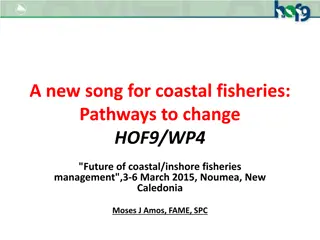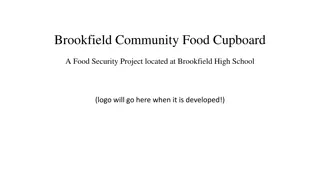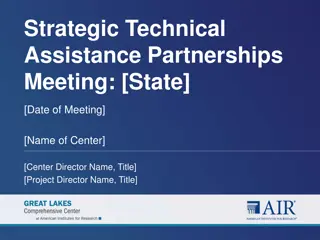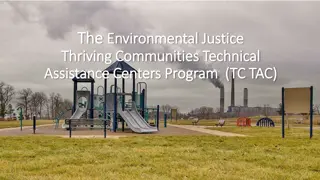FSN Network Meeting November 2012: Livelihoods and Food Security Technical Assistance
Presenting and gathering feedback on the approach of Livelihoods and Food Security Technical Assistance (LIFTs) in promoting high and low household livelihood and food security, vulnerability protection, and continuum of support. The working model includes a diagnostic tool to segment and match clients with services, organizational network analysis, referrals linking NACS clients, and upgrading technical support for service quality. Contact Jacky Bass or Tim Quick for more information.
Download Presentation

Please find below an Image/Link to download the presentation.
The content on the website is provided AS IS for your information and personal use only. It may not be sold, licensed, or shared on other websites without obtaining consent from the author.If you encounter any issues during the download, it is possible that the publisher has removed the file from their server.
You are allowed to download the files provided on this website for personal or commercial use, subject to the condition that they are used lawfully. All files are the property of their respective owners.
The content on the website is provided AS IS for your information and personal use only. It may not be sold, licensed, or shared on other websites without obtaining consent from the author.
E N D
Presentation Transcript
FSN NETWORK MEETING NOVEMBER 2012
Present and solicit feedback on Livelihoods and Food Security Technical Assistance (LIFT s) approach Collect input from Food Security and Nutrition service providers OBJECTIVES
PULL HIGH LOW HOUSEHOLD LIVELIHOOD & FOOD SECURITY Promotion Asset, income and consumption growth HOUSEHOLD VULNERABILITY Protection Asset protection Income and consumption stabilization Provision Asset recovery Consumption support HIGH LOW PUSH
LIFT WORKING MODEL FOR LINKING ES /L/FS SERVICES TO A CONTINUUM OF SUPPORT
1. DIAGNOSTIC TOOL SEGMENT & MATCH CLIENTS WITH ES/L/FS SERVICES Purpose: Simplify client intake process Identify the most appropriate and feasible ES/L/FS interventions for clients Encourage vulnerable populations toward social welfare programs and less vulnerable towards more market based solutions
2. ORGANIZATIONAL NETWORK ANALYSIS MAP & UNDERSTAND ES/L/FS SERVICE PROVIDERS Purpose: Identify ES/L/FS service providers and intermediaries, including catchment areas, eligibility criteria, capacity to absorb clients, etc. Build relationships Baseline frequency of referrals
3. REFERRALS LINK NACS CLIENTS TO ES/L/FS SERVICES Purpose: Explore the basic function of LIFT Diagnose NACS clients Refer them to appropriate ES/L/FS services Track clients to see if they act on referral
4. UPGRADING ES/L/FS SERVICES TECHNICAL SUPPORT TO STRENGTHEN SERVICE QUALITY Purpose: Improve the quality and diversity of ES/L/FS services Ensure sustainability of services
LIFT CONTACTS For more information about LIFT, please contact: Jacky Bass Project Director jbass@fhi360.org Tim Quick LIFT AOTR tquick@usaid.gov
